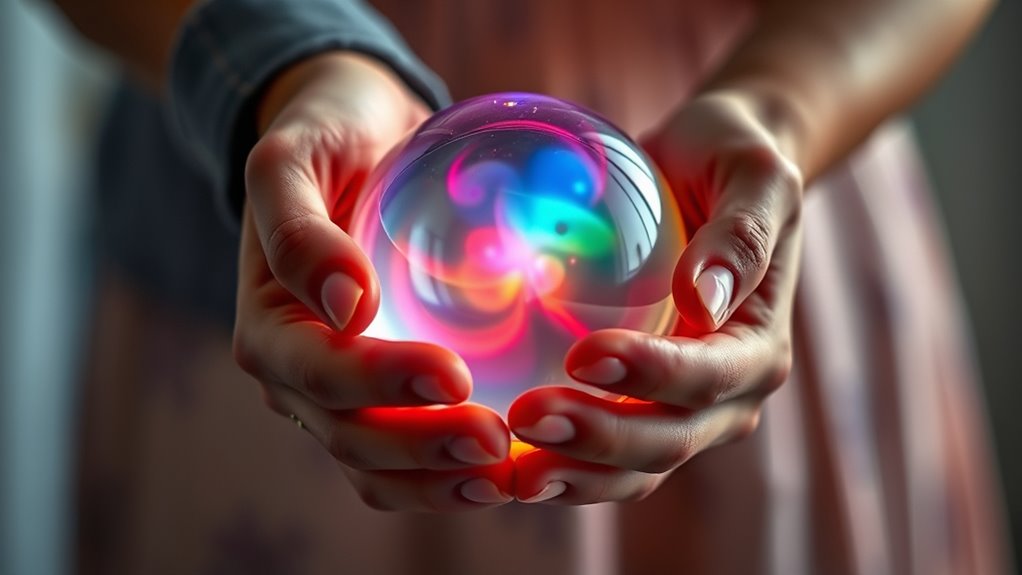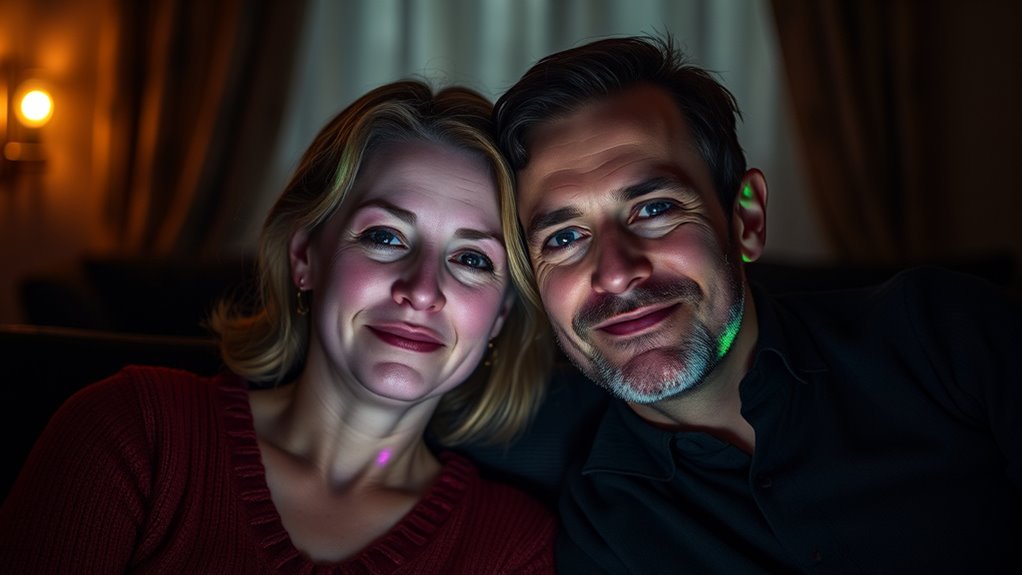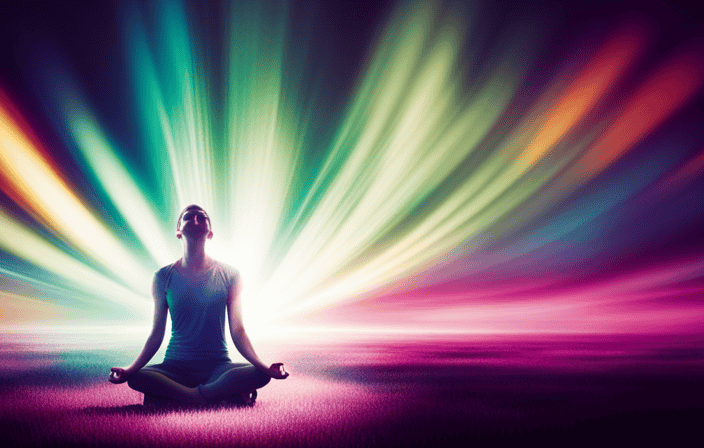When you look at aura colors in relationships, you gain insight into emotional states, compatibility, and underlying issues. Bright colors like yellow and green show positivity and growth, while dull or murky hues suggest emotional blockages. Watching for color shifts and clashes reveals tension or harmony, helping you understand how energies interact. Recognizing these patterns can guide you towards healthier connections. Keep exploring to discover how to interpret these colors more deeply and foster stronger bonds.
Key Takeaways
- Aura colors reveal emotional states, personality traits, and relational dynamics, aiding in understanding compatibility.
- Bright, vibrant colors like yellow and orange indicate positivity and passion, while dull shades suggest unresolved issues.
- Observing color shifts and interactions helps identify relationship tension, harmony, or emotional conflicts.
- Recognizing recurring color patterns and clashes provides insights into underlying relationship messages and growth opportunities.
- Using aura insights fosters compassion, supports conflict prevention, and promotes healthier, more balanced connections.

Have you ever wondered what your aura colors reveal about your true self? When you start paying attention to your aura, you can gain deep insights into your emotional state, personality, and even how you relate to others. Aura color symbolism serves as a guide to understanding these subtle energy expressions, especially when it comes to relationships. Interpreting aura patterns isn’t just about identifying colors; it’s about recognizing how these colors interact and shift based on your feelings and experiences. When you observe someone’s aura, you’re essentially reading their energetic fingerprint, which can tell you a lot about their intentions, openness, and emotional well-being. Recognizing recurring patterns in aura colors can help you better understand the underlying messages they convey.
In relationships, aura colors act as telltale signs of compatibility and emotional health. For instance, a bright, clear yellow aura indicates optimism, confidence, and a cheerful disposition, making it easier for you to connect with someone who radiates positivity. Conversely, a dull or murky color might suggest emotional blockages or unresolved issues, signaling you should approach that connection with caution or compassion. Interpreting aura patterns involves noticing shifts in colors and how they blend or clash. If your partner’s aura shows vibrant orange, it might mean they’re passionate and adventurous, encouraging a dynamic relationship. On the other hand, a green aura often reflects healing and growth, which can be a sign of emotional maturity and willingness to work through conflicts.
The way aura colors evolve also speaks volumes about the health of your relationship. If you notice a sudden change from calm blue to fiery red, it could signify rising tension or frustration. Recognizing these patterns allows you to address underlying issues before they escalate. When two auras interact, the colors can either harmonize or create tension. A harmonious pairing might have complementary colors, like purple and blue, indicating mutual understanding and spiritual connection. Conversely, conflicting colors, such as a dominant red clashing with a gentle pink, could point to emotional clashes or mismatched needs.
Frequently Asked Questions
How Accurate Are Aura Color Readings in Predicting Relationship Outcomes?
Aura color readings can give you insights, but their accuracy in predicting relationship outcomes varies. If your aura remains consistent, it indicates emotional stability, which supports positive relationship dynamics. However, emotional influence from external factors can cause fluctuations, making predictions less reliable. Remember, aura colors are a helpful guide, but they shouldn’t be the sole basis for decision-making. Trust your intuition and communicate openly to strengthen your relationships.
Can Aura Colors Change Over Time or Due to Specific Events?
Think of your aura as a river that flows and shifts over time. Yes, your aura color can change due to event-triggered changes or natural aura color evolution. Major life events, emotional shifts, or personal growth can cause these vibrant currents to flow differently. As you experience new situations, your aura adapts, reflecting your inner state, making aura colors dynamic rather than fixed, offering insight into your ongoing journey.
Is There a Scientific Basis for Aura Color Readings in Relationships?
There’s no strong scientific basis for aura color readings in relationships because they lack empirical evidence. While some believe aura colors reflect biological basis and psychological factors, these interpretations are subjective and not scientifically proven. You might feel a connection to aura readings, but keep in mind that they’re more about personal belief than objective science. Relying on proven methods like communication and empathy is more effective in relationships.
How Do Cultural Differences Influence Aura Color Interpretations?
Cultural differences greatly influence how you interpret aura colors, as cultural symbolism shapes their meanings. In some cultures, red might symbolize passion, while in others, it signifies danger. Interpretation variations occur because each culture assigns unique significance to colors, affecting your understanding of aura readings. You should consider these cultural contexts to accurately interpret aura colors in relationships, ensuring your perceptions are sensitive to diverse cultural symbolism.
Can Aura Colors Reveal Hidden Feelings or Intentions in Relationships?
Yes, aura colors can reveal hidden feelings or intentions in relationships. Through energy perception, you might sense subtle shifts or tinges that indicate unspoken emotions. These colors provide emotional insight, helping you understand what someone isn’t openly expressing. By tuning into their aura, you can uncover underlying motives, deepen your connection, and respond more empathetically. Trust your intuition and observe these energy cues to gain clarity about their true feelings.
Conclusion
By understanding aura colors, you gain insight into your relationships, revealing hidden truths and unspoken feelings. Just as a vibrant hue signals clarity, a dull shade hints at uncertainty—each color telling its own story. In recognizing these subtle shades, you bridge gaps that words often can’t reach. Ultimately, reading aura colors empowers you to navigate connections with awareness, transforming superficial encounters into meaningful bonds—proving that beneath every hue lies a deeper, more authentic truth.








